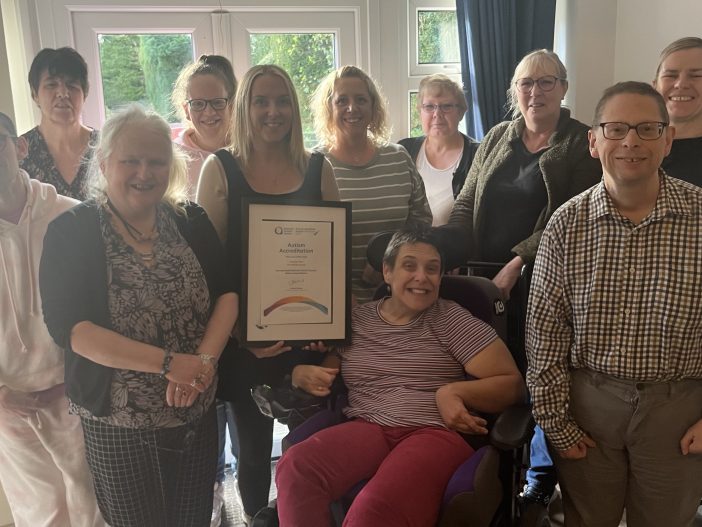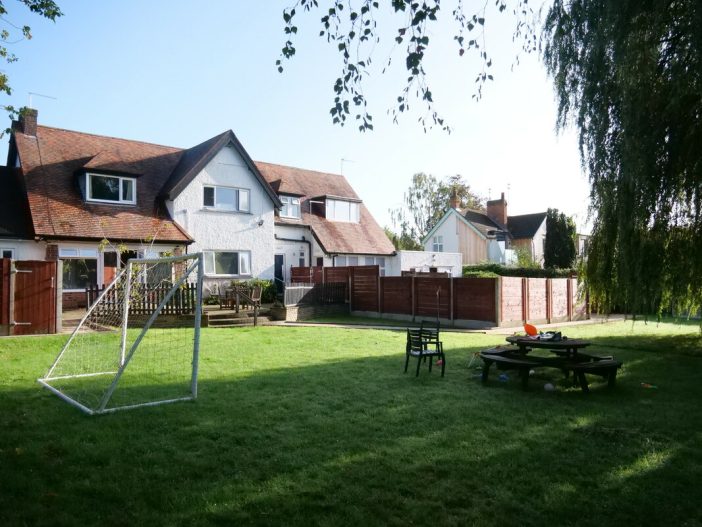Reducing reliance on long-term hospital placements
Dave Barlow is the Head of Behavioural Support at Voyage Care. Below, he shares a personal blog exploring the collaborative opportunities when supporting people to transition from long term hospital placements back to community settings.
I recently read a BBC article stating 100 hundred people with learning disabilities and autism in England have been held in specialist hospitals for at least 20 years. It made me reflect on the experiences I’ve had with families, like Tony Hickmott’s parents, where we have supported individuals to move on from institutionalised settings after many years.
As the Head of Behavioural Support at Voyage Care, my role is focused on supporting individuals who are preparing for discharge from hospital or may be at risk of being admitted to hospital, perhaps due to placement breakdown or an increase in high-risk behaviours.
In this blog, I’ll share my three key personal learning from transitions and how, at Voyage Care, we continuously reflect and develop our approach, recognising and overcoming the challenges faced.
1: Communication is key
When a change to care provision occurs, whether that’s transitioning providers, location or in the level of support, it can be really tricky for the individual and their loved ones. As part of my role, it is of the upmost importance to communicate with the individual, their loved ones and external professionals, so we all understand what is happening.
At Voyage Care, we are passionate about our person-centred approach, which means the individual has meaningful involvement at each stage of their journey, and we match their pace when preparing for change. Due to this, the earlier we’re involved with discharge planning, the better.
During transition planning, there has to be open and regular communication with all partners involved – including the parents and loved ones. This way, we can reduce any anxiety around the change and begin a positive journey together.
It is also beneficial to consider who else would add value at an earlier stage. For example, we value the involvement of housing partners at an early stage to look at capital funding and grants that can be accessed to deliver specialised housing. Having the right environment is so important to ensuring that the person can be supported to live in the community in a safe and sustainable way. A collaborative approach is needed to find the right accommodation that meets the person’s needs, working with housing partners to sensitively design the environment so that it doesn’t feel clinical.
2: Robust transition planning
As part of ensuring a smooth process, we need to have a robust person-centred transition plan that involves everybody.
The start of this journey includes finding out what is important to the person, plus what a good transition looks like to them. For example, thinking carefully about the best way to introduce the person’s new staff team to them before the move. This may be gradually over time.
Monitoring the wellbeing and engagement with the individual during this plan means we can provide the right team and prevent a support breakdown. We also hold person centred workshops for the new support worker team that is co-produced with the individual, if they choose, and the people that know them.
We use this to learn directly about the little, and big, things that matter and really understand the person. We also shadow the hospital team and have regular debriefs with wider multi-disciplinary team along the way.
One of the key components in robust transition planning is ensuring the sustainability of support when the person moves. Here, we take a multi-agency approach by agreeing relapse prevention and contingency plans ahead of time. This ensures we can work collaboratively to be responsive to early warning signs and prevent crisis.
3: Developing the right support
As referenced in the BBC article, finding the right accommodation alongside a skilled team can be a complicated process. It’s difficult to give an average on how long a transition takes because each the transition to move on from a long-term hospital is unique to the individual and is based on what a good transition plan looks like to them.
For example, somebody might be ready to move in a week, yet for another person it might take a few months. For some, visits to their new property before the move and overnight stays to become familiar with the environment beforehand may be important. We must move at the right pace for them, ensuring that we are ready and adjust our approach – and this is before considering what other parts of the care package looks like!
When creating a care package, it’s a delicate balance of taking time to create the right package of support, without taking too long. Acting too quickly, can result in the support for the individual lacking in the quality they deserve.
Yet, on the other hand, taking too long can have a detrimental effect on the person’s mental well-being. It comes back to communication, we have the responsibility to be honest and communicate realistic timescales.
Our teams are recruited through a value-based approach where they each have the right attitude, empathy, compassion and life experience to provide quality support. All our teams are supported by our Behavioural Support team with emotional support and reflective practise. This promotes resilience and leads to sustainable support from a consistent team.
Overall, we know there is always space for learning and improving how we provide support and overcoming the challenges we face. Plus, we know we need to be prepared for the bumps in the road that may be faced when supporting someone to move on from hospital. But, here at Voyage Care, we are committed to continuous improvement and partnership approach, so we can ensure the people we support can live the life they want.
Find out more
If you’d like to find out more about our Specialist Behavioural Support Services, why not listen to their podcast episode on our website? In it, they discuss what Specialist Behavioural Support Services is, and how important it is to provide individuals with person-centred care while in those services.

 Views
Views 

